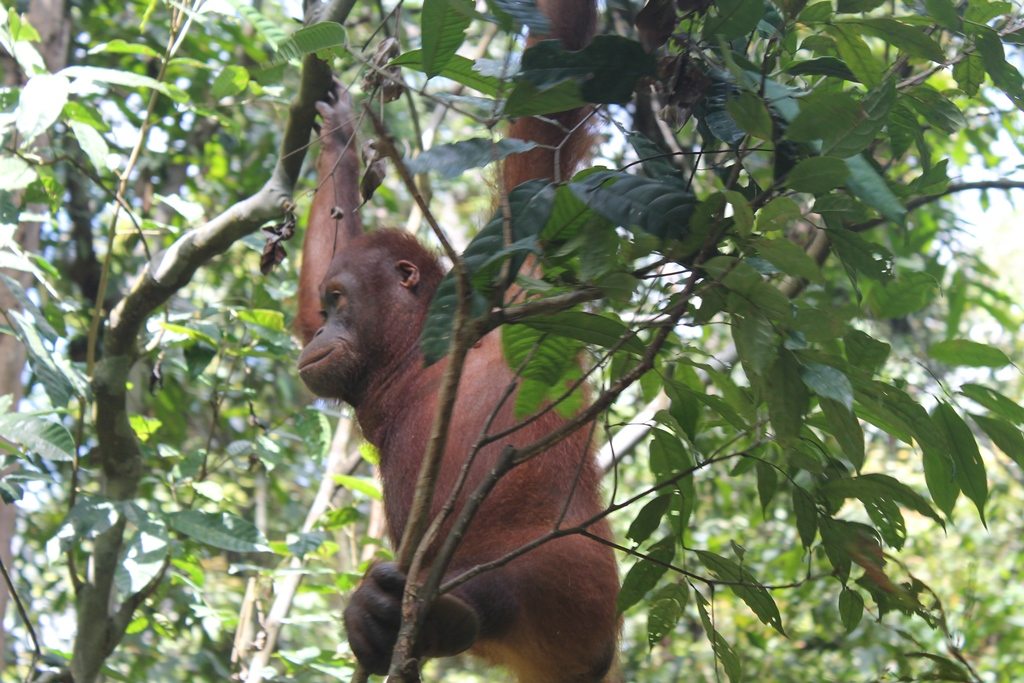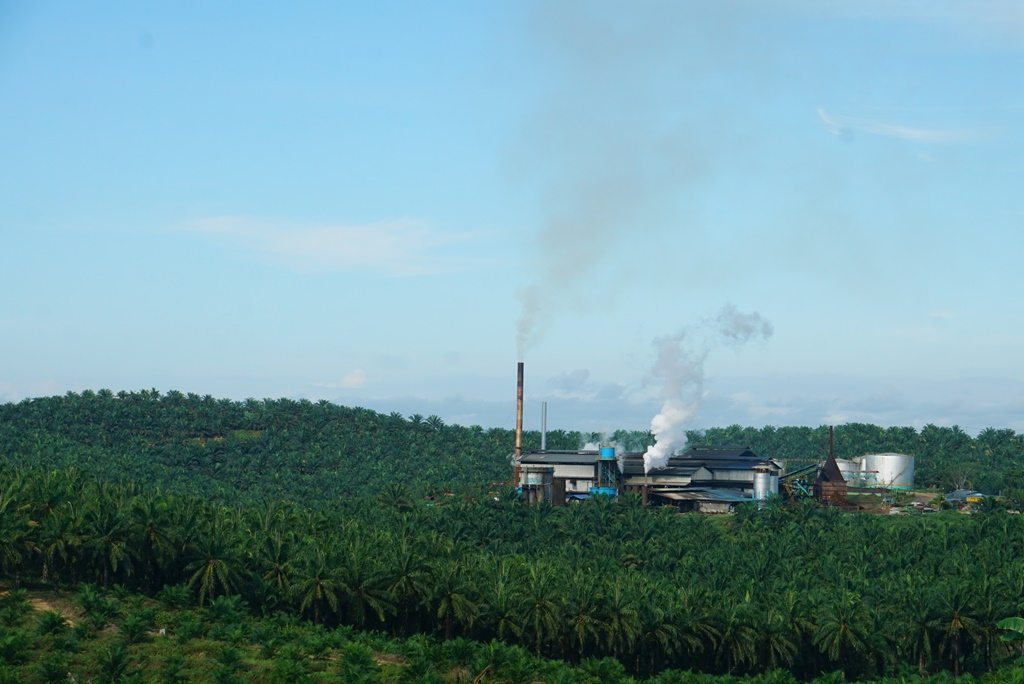
To put that into perspective – an 80% decline is like losing four out of five people you know!
Over the past 40 years, a total of 17.7 million hectares of forest has been destroyed in Borneo, mainly due to make way for oil palm plantations. Half of these forests used to be prime orangutan habitat. Deforestation is accelerating and it’s predicted that a further 15 million hectares of forests will be cleared and converted to plantations by 2025! However, this isn’t the only threat this incredible species is facing; it is being hunted for its meat and to stop crops from being raided.
The future is looking pretty bleak for the orangutan but there’s still hope.
Two major strategies exist to save orangutans from extinction: protecting the individuals or protecting their forest habitat. These strategies are both complex, but we can all contribute to make a difference.
Marc Ancrenaz tells us more:
Securing the future
“Hunting is the major reason for orangutan decline in Borneo. This threat must be stopped. The law must be enforced, and people need to become aware about the protected status of the species. The main responsibility here lies with enforcement authorities of Malaysia and Indonesia, and with groups that are fighting wildlife trade or are raising awareness about the orangutans in Borneo.
“Increasing the size of protected forests is an obvious option to ensure the long-term survival of the species; less than a third of orangutans are currently living within protected forests in Borneo. Unfortunately, protecting all forests containing orangutans is highly unlikely, and in addition, many protected areas are in crisis today because of the continuing lack of resources allocated for their management. As a result many ‘protected’ populations are still declining across the island. Improving the protection of these areas is therefore necessary but isn’t sufficient if we aim at securing the future of the orangutan in Borneo.

“It’s vital that we identify methods for people to understand and accept living alongside the ‘man of the forest’, to ensure the survival of orangutans and the many other species living within their habitat.
“Industries responsible for orangutan decline (such as timber, oil palm or mining) must become more responsible and adhere to sustainable management practices. Creating forest corridors to link isolated orangutan populations together following the breaking up of their habitat will provide a way for the animals to move across highly transformed landscapes.
“A positive note is that recent progress in technology and science provides the necessary tools to design optimal landscapes where economic and conservation interests can be resolved. Their implementation requires better informed decision making and more transparent land-use decisions. Human societies need to shift from a ‘Business-As-Usual’ approach to a more holistic vision where long-term profits for the majority are favoured over short term profits for a few.

“Governments and industries alike will embrace more sustainable practices only when the ‘market’ will require so. This is where our daily choices as consumers will contribute to make a difference. By selecting certified products (tropical timber certified by FSC; palm oil certified by RSPO for example) we are sending strong signals to growers, producers and retailers that we care for the orangutan, we care for the environment, we care for tomorrow.
“We will save the orangutan only when people start to pay attention and to care enough about the natural wonders that are around us, wherever we live on Earth.”
We will continue to work with HUTAN and fight to save orangutans from extinction. You can too by joining our Sustainable Palm Oil Challenge today or make a donation here. Watch this space for more updates from our latest field trip to Borneo.